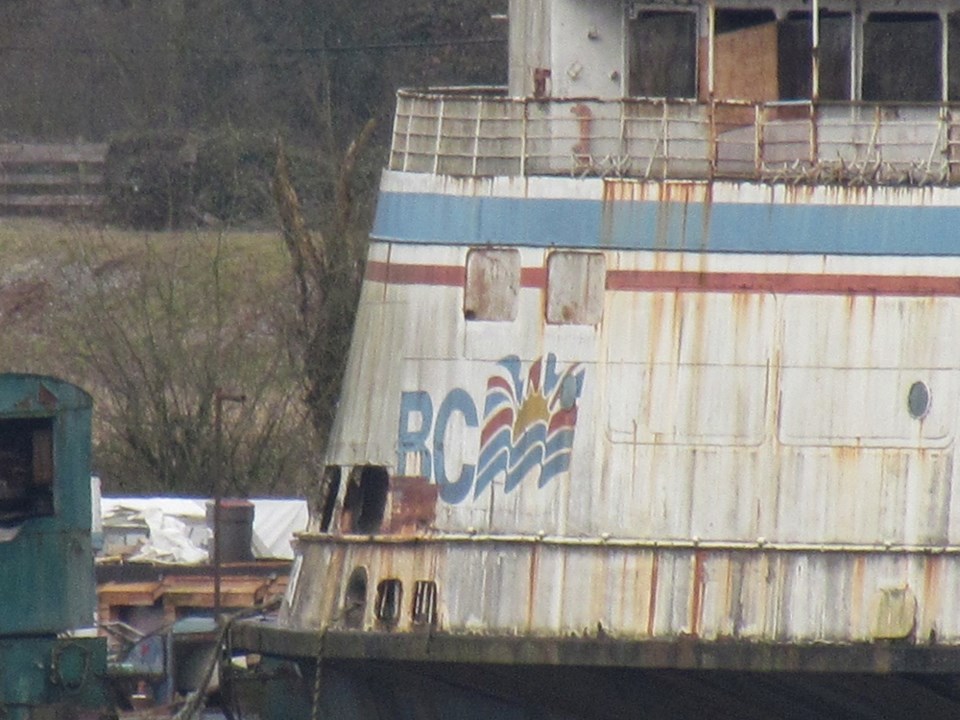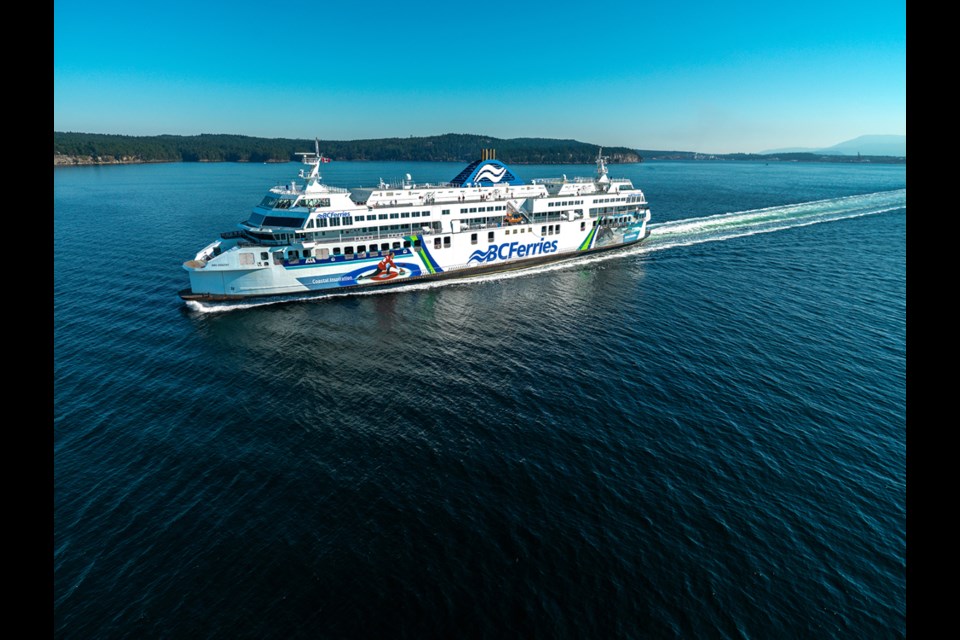Much focus has been placed on abandoned or derelict boats owned by individuals in Squamish, but the largest boats in our waters are likely ferries and national defence vessels.
What happens to those vessels at the end of life?
The answer depends on who is responsible for them.
First a little background on ferries in the province.
British Columbia Ferry Services Inc. — better known as BC Ferries — was formerly a Crown corporation, but since 2003 has operated independently, as a publicly owned company.
It operates along the coast and has a fleet of 35 vessels.
It claims to be one of the largest ferry operators in the world.
Inland ferries working on lakes and rivers throughout B.C. are not operated by BC Ferries, but instead are the responsibility of the Ministry of Transportation, which uses private companies to transport passengers across these waterways.
B.C. Ferries has a fleet master plan that determines planned retirements for vessels.
"A ship is retired when it nears the end of its useful life. For our ferries, this is usually when a ship is between 45 to 55 years of age," spokeswoman for BC Ferries Deborah Marshall told The Chief.
Since 2009, the corporation has retired eight vessels from its fleet.
"Our preference is to sell used vessels for ongoing trade — further commercial operation," she said. "Because of our commitment to the environment, if we are not successful in finding a buyer who will continue to operate the ship, we will ensure the vessel is recycled in an environmentally-friendly manner."

Squamish boater and conservationist John Buchanan says, however, that he has dealt with a few either retired BC Ferries or national defence vessels that ended up in Howe Sound over the year.
Their policy sounds good on paper, he told The Chief, but the reality can be much different.
"The pattern I see is private individuals are purchasing these ferries off of them and then stripping them down for anything of value," he said. Then they can end up floating and deteriorating for years.
The company can't guarantee that the new owner follows through with their stated plan for the vessel, he said.
Some who buy such boats run out of money and can no longer properly maintain or care for them even if they intended to, he said.
In 2012, the Queen of Sidney, which had been retired in 2000 and sold in 2001 to reportedly become a floating logging camp, appeared in Howe Sound near Anvil Island. The boat was vandalized, becoming an eyesore and an environmental concern for residents.
As of March 24, it was docked in Mission.
The people behind the Overland Squad website toured the reitred Queen of Sidney in 2014 and made this video:
Vessels at the end of their lives should be turned over to scrap yards, Buchanan said. It is good employment for people who scrap boats too, he added. And it costs society and the environment much less in the end than having to deal with abandoned vessels years later, he said.
A spokesperson for the Ministry of Transportation and Infrastructure told The Chief that the ministry responsibly recycles decommissioned inland ferries.
The ministry has decommissioned four vessels over the past five years, of which two have been recycled, and two await recycling.
Asked if the ministry would support legislation around end of life for vessels, the ministry said it "supports efforts to reduce the number of derelict vessels abandoned on B.C.’s coast and waterways and encourages BC Ferries and other owners of marine vessels to ensure that those they are selling their vessels to have appropriate disposal plans.
Department of National Defence equipment, including vessels, "are determined to be at their end of life when that equipment no longer fulfills an operational requirement in the Canadian Armed Forces,” according to a department spokesperson.
A vessel may be determined to be at its expiry date for several reasons including when its particular use is no longer required, the equipment is replaced by a new technology, or the equipment is assessed as beyond economical repair.
"When this occurs, it is declared surplus. The Department of National Defence has a formal process for disposing of surplus CAF equipment, including naval vessels," the spokesperson told The Chief.
A total of nine naval vessels have been declared surplus over the past 10 years.
Once the Canadian Armed Forces concludes that a vessel no longer is of efficient use, it is determined what is “best value for the Crown,” which may be putting it up for sale or sending it for disposal. If a vessel is to be sold, the Department of Public Services and Procurement Canada takes over its sale. If it is to be disposed of, that is done in a "safe, efficient and environmentally responsible manner that conforms to Canadian Laws."
That process involves removing all controlled goods, electronics, communications, weaponry, and other equipment onboard the vessel in accordance with the Surplus Crown Assets Act and the Treasury Board Directive on Disposal of Surplus Material.
The vessel is then dismantled through a disposal contract.
"Precautions are taken to ensure that the terms and conditions of the disposal contract clearly specify adherence to Canadian Laws, including those related to the protection of our environment. Canada provides oversight of the disposal activities performed by the disposal contractor, to ensure that those terms and conditions are adhered to."
~With files from CTV News and Vancouver is Awesome

Fast facts:
A total of 9 naval vessels have been declared surplus over the past 10 years:
· Two auxiliary oiler replenishment vessels - Protecteur and Preserver;
· Three defense destroyer helicopter vessels - Iroquois Class, Iroquois Algonquin, and Athabaskan;
· One Canadian Forces auxiliary vessel (Ocean Research) - Quest;
· Three auxiliary vessels: Granby (dive Tender), YRG 60 (Fueling Barge), and YDG 2 (Deperming Barge).



